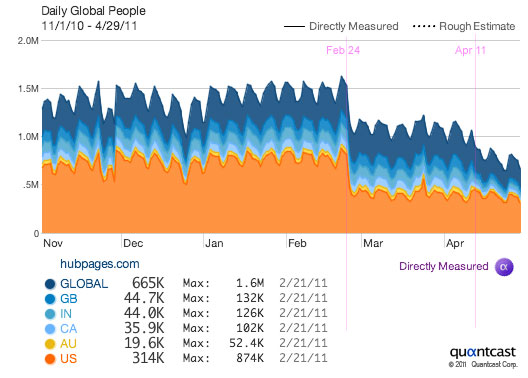What Is Cookie Stuffing?
Once you’ve been hanging around the affiliate marketing world for a while, you will probably start to stumble towards the “badlands” of black hat SEO. If you’ve spent most of your time hanging out on places like the Warrior Forum, then you’ll probably be terrified of the term Black Hat, as 99% of affiliates and Internet marketers are totally ignorant of what it really involves.
In fact, if you bring up Black Hat SEO around diehard “White Hat” or “Ethical” marketers, then they usually throw a complete wobbly. To much of the IM world, Black Hat marketing is about as evil as shooting a patron saint with a dried dog turd.
However, if you’re actually willing to do a little bit of independent investigation, then you will quickly learn that black hat methods aren’t actually evil – and some can be quite useful. In fact, I would be willing to argue that there is no ethical difference between the so-called white hat method of building a list with inferior quality giveaway products, and then bombarding said list with relentless crummy offers, and the blackhat methods of using automated software tools to build massive amounts of links and drive traffic.
One “Black Hat” technique which does attract a lot of controversy (and rightly so) is the practice of cookie stuffing.
Basically, all affiliate marketing is based on the concept of the cookie – each affiliate has their unique ID embedded in a cookie, which is placed on the end user’s machine when that user clicks on an affiliate link (such as this one). When a sale is made, the affiliate whose cookie was present when the transaction was processed is credited with the sale, and receives their commission. Although there are subtle nuances and differences between affiliate networks, the basic process is almost always the same.
In layman’s terms, how does cookie stuffing fit in with all of this?
Effectively, cookie stuffing provides a method of getting your affiliate cookie dropped on a visitor’s computer, without them actually *clicking* your affiliate link. At the very least, you could argue that this is a legitimate way of getting credited with a sale where you had a strong hand in influencing a customer to buy (ie Billy Bob comes to your site, reads all about the fitness ecourse you’re promoting, and then goes to buy from the trademarked URL because it’s a well-known brand. You still make your cut because you’ve dropped your cookie on his machine). At the very worst, cookie stuffing provides a means of totally hijacking traffic that is disinterested in your offer, and then trying to profit from traffic volume.
Why Do Cookie Stuffing?
The only real reason anybody does cookie stuffing is to make more money – it really is that simple. Depending on the way that the cookie stuffing campaign is run
Of course do-goody white hatters will proclaim until the cows come home that all cookie stuffing is immoral and illegal. I will attempt to argue to the contrary in some cases (such as good old Billy Bob above). But for now, let’s actually examine some basic cookie stuffing methods.
How To Do Cookie Stuffing For Total Newbies
I’m probably going to feel some heat for this, but I think it’s important you understand some basic cookie stuffing methods. Now I’m not saying that you should run out there and go crazy, nor am I actually going to get really in-depth with teaching you how it’s done. However, I will outline the most basic methods people use to stuff affiliate cookies:
Image Cookie Drop
This is the most basic method ever for cookie stuffing. Basically, you use an HTML image <img> tag which points to your affiliate link, as opposed to a real image. When the page is loaded, the visitor’s browser will attempt to load the image, but instead load the page referenced in the tag and your cookie is dropped.
Example:
<img src=”samsaffiliatelink.htm” alt=”Sams Picture” height=”1″ width=”1″>
Simple right?
The biggest drawback with this method is that anybody can check your source code and see that the image is just a disguised affiliate link. No seasoned affiliate manager/tech person will fall for that, and you’re bound to get some do-gooder reporting you if the affiliate network doesn’t catch you first. Furthermore, you will find that because you’re telling the browser to load an image, but the image doesn’t display, then one of those annoying red crosses will appear on-screen.
There is a more advanced version of the image cookie stuff method, which involves programming a bit of PHP. Basically, it is the image stuff on steroids, and makes being detected significantly less likely. You can check this method out (with resources files and more) here on Esrun – this guy has a treasure trove of cookie stuffing info.
Iframe Method
One of the most basic and popular methods of cookie stuffing is to create a simple 1 pixel iFrame on your page, and then get that iframe to load your affiliate link. I’d say 99% of cookie stuffers probably started with this one.
Once again, the potential of being caught here is reasonably high as someone just has to open your source code up and see that you’ve got that sneaky wee iframe sitting there.
There is a more complex version of this on Esrun (read about it here) that involves using htaccess and javascript to cover your tracks.
WordPress Plugins
There are a number of different cookie stuffing WordPress plugins available. Some are clearly marketed as cookie stuffers, although there are lots of “white hat” guys selling their plugins on places like the Warrior Forum under the guise of being plugins that ensure you get the commission you deserve (note that this just means cookie stuffing).
A good example is the Chocolate Chip Cookie Stuffer plugin (search on Google for it). Basically, you just install the plugin, load your cookies for different pages, set your stuff frequencies – the percentage of visitors who will receive the cookie – and you’re good to go.
Plugins are the easiest way to do cookie stuffing, and can often make detection reasonably difficult. However, some cookie stuffing plugins are very nefarious, because they are programmed to drop the developers’ cookies on your visitors (without you knowing) or even sneakily redirect visitors to a different page.
So we’ve covered the basic methods of cookie stuffing, and now it’s time to get philosophical about it. Is cookie stuffing really as bad as people claim?
Well, there are two main ways to do cookie stuffing:
1) Using dropped cookies to ensure you get a sale when you provide a valuable review or information about a product
2) Spamming loads of traffic with different affiliate cookies, in the hopes that a fraction will purchase and you’ll earn (this is popular with eBay and Amazon, because it’s fairly rational to assume that a good number of people will purchase from either eBay or Amazon in the course of any given day)
Ethical Cookie Stuffing?
The first type of cookie stuffing, I personally have nothing against. It’s becoming more and more difficult to profit from affiliate marketing IMHO, with lots of people refusing to click on affiliate links, or hijacking your links with their own IDs (I actually have no idea why people don’t want to buy from an affiliate link, beyond the misguided notion that it might be a harmful link)
So imagine if, instead of having to get a visitor to click on a cloaked affiliate link in a call to action, they arrived on your pre-sell/review page, read your content, and were then told to go to www.productsite.com (the official site) without clicking any form of affiliate link. Instantly, you look like a much more trustworthy source, because it’s not immediately apparent that you have a vested interest in making the product sound better than it actually is. Furthermore, the official site link looks far more appealing to click than an affiliate link or redirected link.
And all this time, you’ve dropped the cookie for that exact product using a clever bit of cookie stuffing.
Now, tell me what is wrong with that? If someone is swayed to purchase a product through your testimonial/review/pre-sell, then you deserve to profit, regardless of whether they actually purchased through your link or not.
In this kind of situation, where you’re dropping a single cookie on a single page for just one product, I really can’t see why any sane person would have anything against it. Of course that doesn’t mean that affiliate programs are open to cookie stuffing in this manner (although I have heard of people approaching individual merchants on Clickbank and explaining how they plan on cookie stuffing, in exchange for the merchant turning a blind eye and not ratting their ass out to Clickbank)
To be honest, this type of cookie stuffing arrangement is preferential for all involved (apart from the big guru types who dominate the SERPS with their often “thin” affiliate sites) – I mean you get easier sales because you aren’t doing the usual shoving-affiliate-link-down-the-throat-of-the-visitor maneuver and your cookie is dropped on the basis of you providing useful information about the product, rather than being the lucky last person to get the click. The merchant experiences higher conversion rates, and therefore makes more money. Furthermore, the customer is not negatively affected in any way whatsoever.
Of course you try this at your own risk – you could be kicked from the affiliate program at any stage. However, if you can get away with it, then you could stand to make quite a lot of money in a short space of time. I have tried this method myself (don’t worry, I’m not cookie stuffing on this site) and it does work extremely well.
The Wrong Type Of Cookie Stuffing
So I’ve just covered the “right” way of cookie stuffing, but there is another method that people use which is much more difficult to condone. Basically, the shotgun scatter method of cookie stuffing is where you try to jam cookies for high traffic affiliate programs (think Amazon and eBay) onto visitors machines.
You profit here not from targeting a specific product that someone is searching for, but instead through the probability that by stuffing more cookies, you increase your chances of having someone purchase through a popular site like Amazon or eBay, therefore making you sales.
Think about it this way:
Your site receives 1000 visitors per day, and you stuff each visitor with a 24 hour Amazon cookie. If one in every 250 people makes a purchase on Amazon each day, then you make 4 sales per day.
Of course that’s very simplified, but it gives you an understanding of why people do this type of cookie stuffing.
If you have a very high traffic site, and can target your cookie stuffs to the niche (for example if you run a PC hardware blog, you could stuff with affiliate cookies for popular hardware retail websites) or at the very least use Amazon/eBay cookies, then there is the potential to make a whole heap of money. In fact, it’s basically a license to print money for as long as you can get away with it. For example, the Digital Point forum founder and his associate made over $20 million cookie stuffing eBay.
However, the chances are you won’t get away with this type of cookie stuffing for long. When you start to drive massive amounts of visitors to an affiliate program, you’ll come under the scrutiny of affiliate managers, as well as staff who are there only to hunt out affiliates engaging in any form of malpractice.
Why do you think that affiliate programs will often assign a personal concierge/affiliate manager to their “superstar” affiliates? This isn’t just to make the affiliate feel welcome and to encourage them to stay; believe you me, the affiliate manager will also be hunting for any signs of potential malpractice.
Furthermore, when cookie stuffing with the shotgun scatter method, you will probably have pretty low conversion rates (because your cookies aren’t very well targeted). All it takes is an affiliate manager to ask why such a high earning affiliate is struggling to get decent conversions, and you could be right in the poo.
Finally, because this method of cookie stuffing involves jamming untargeted cookies into thousands of unsuspecting visitors (most of whom have no interest in actually buying anything) you could find yourself seriously in trouble with legal authorities. I doubt that by cookie stuffing highly targeted cookies on a small scale (the first method I outlined) you would ever risk getting in trouble, the only exception being removed from an affiliate program. However, if you want to dance with the devil and try to profit from big time cookie stuffing, then you had better put a chunk of your monthly profits aside to deal with the legal costs of defending against any potential litigation!
Conclusion
What is cookie stuffing? It’s a controversial topic, and a real way of making money. If you value the dollar more than you do ethics or morals, then you will probably spend the next 24 hours reading as much as possible on cookie stuffing methods, and will implement them. Now I’m not here to judge, and if you want to try cookie stuffing then I applaud you for having the guts to do so (and reading beyond the whole white hat screen of ignorance) but I also would like to warn you that you could get in a lot of trouble for this.
Basically, what I’m saying is I accept zero responsibility if you get caught cookie stuffing!
[signup id=”34″]



